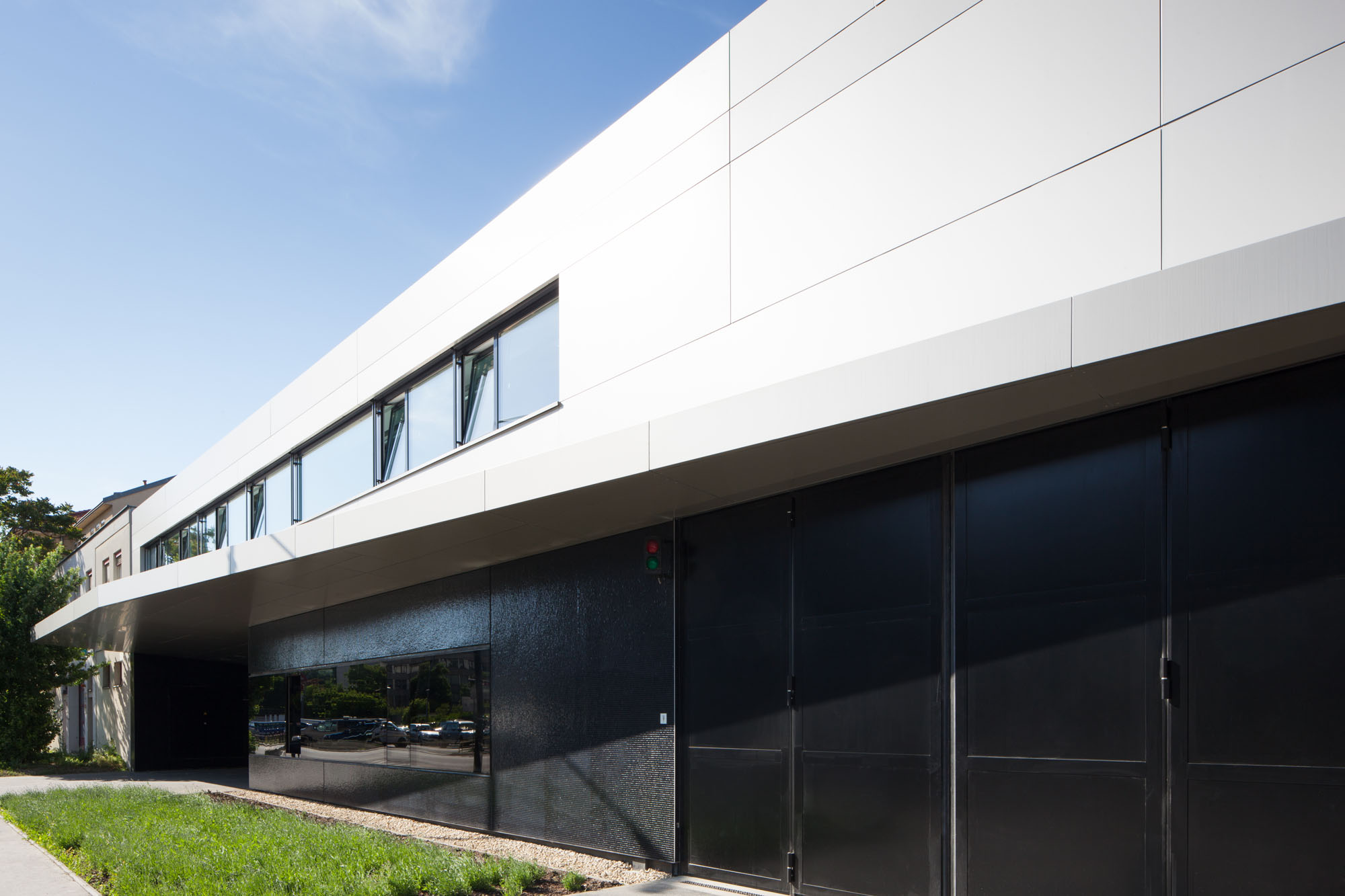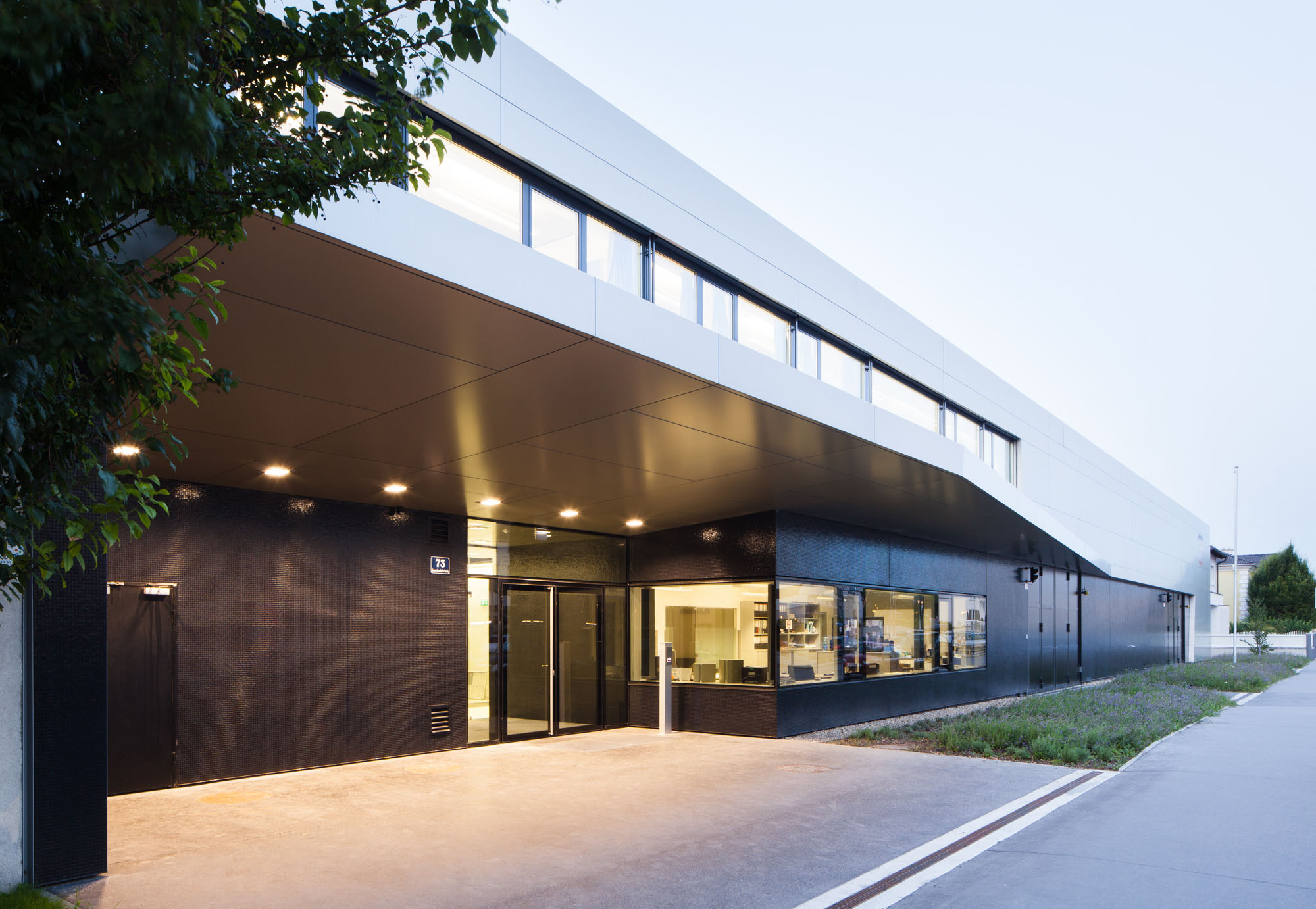
Ambulance station Simmering
As part of an architectural competition, we have won the first place and were thus able to plan Simmering's first own ambulance station. Not only will the station provide a much better service for Simmering, it will also be completely responsible for the whole district.
Two functions: A garage and a two-storey staff wing, combined under one roof, form this building and structure it. The rescue station is accessed via a recess in the façade and subsequently via the atrium, a light-flooded interior space that signals further vertical access to the first floor.
Location
1110 Vienna, Austria
Year
2013
Category
Öffentlicher Bereich
Photography
Markus Kaiser
Commissioned by
Rettungs- und Krankenbeförderungsdienst der Stadt Wien (MA 70)
What
Competition winner
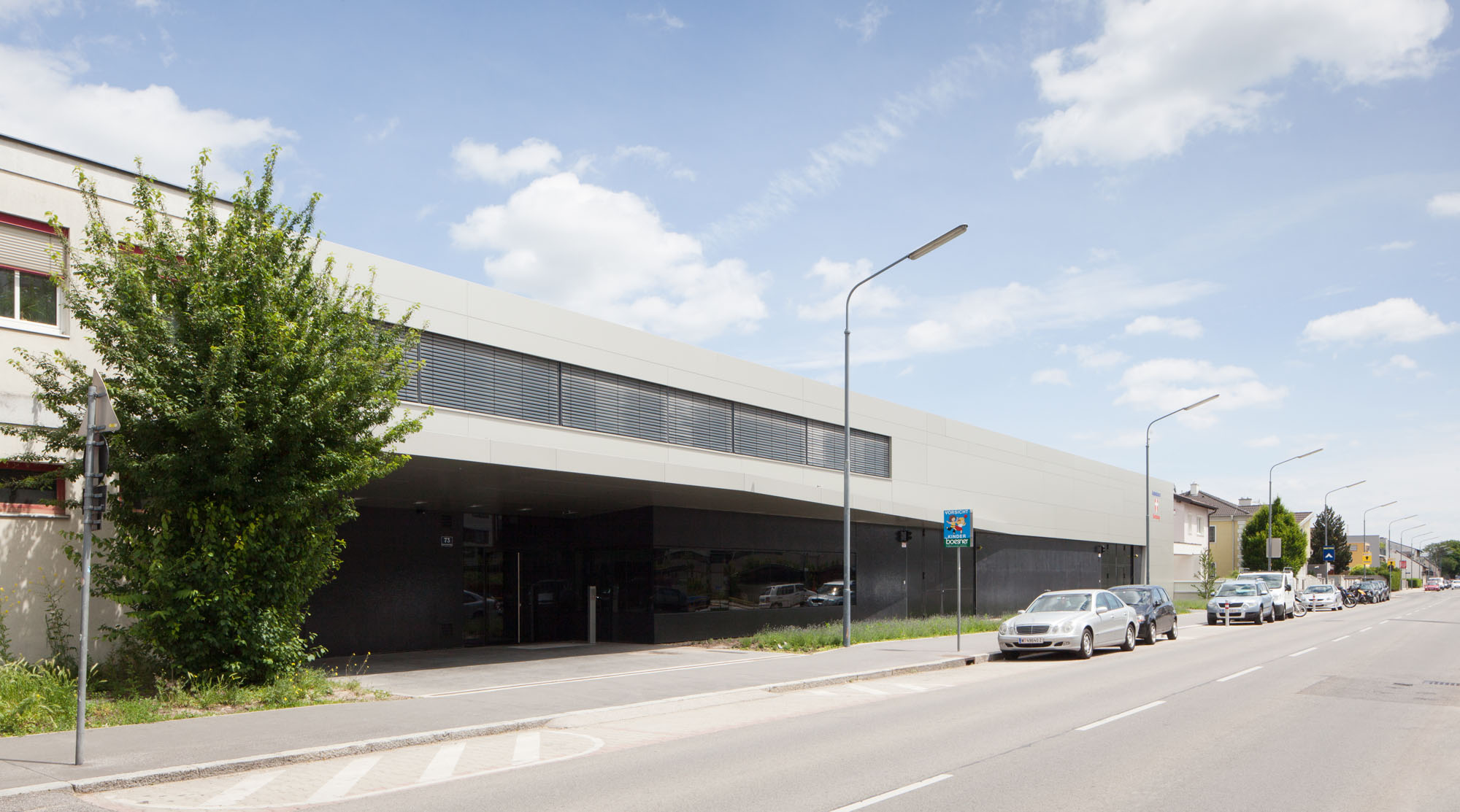
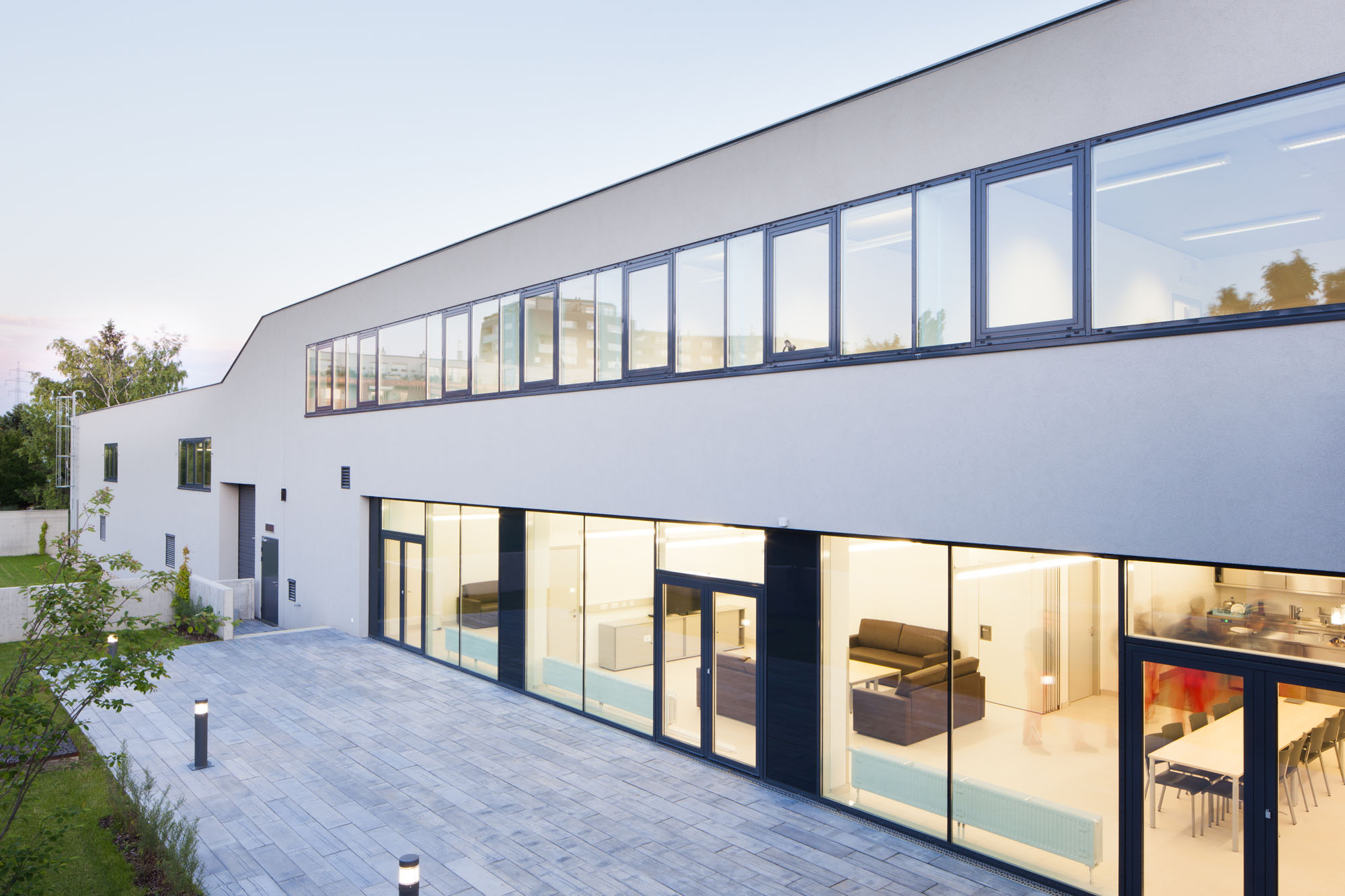
Barrier-free
The ambulance station is barrier-free accessible and is located in the immediate entrance area of the ground floor. It is spatially connected to the ward management. From there you can directly see the garage, the locker room and the street. This location allows you to see and control all processes in the building.
Space for recreation and regeneration
The north-east facing team-, day-and night rest rooms are located on the garden side. For this reason, the climate of these rooms is optimal for the regeneration of the team, even in summer. The day rooms are located on the ground floor and are directly connected to the garden. The landscaped and greened outdoor area provides additional recreational space for the staff.
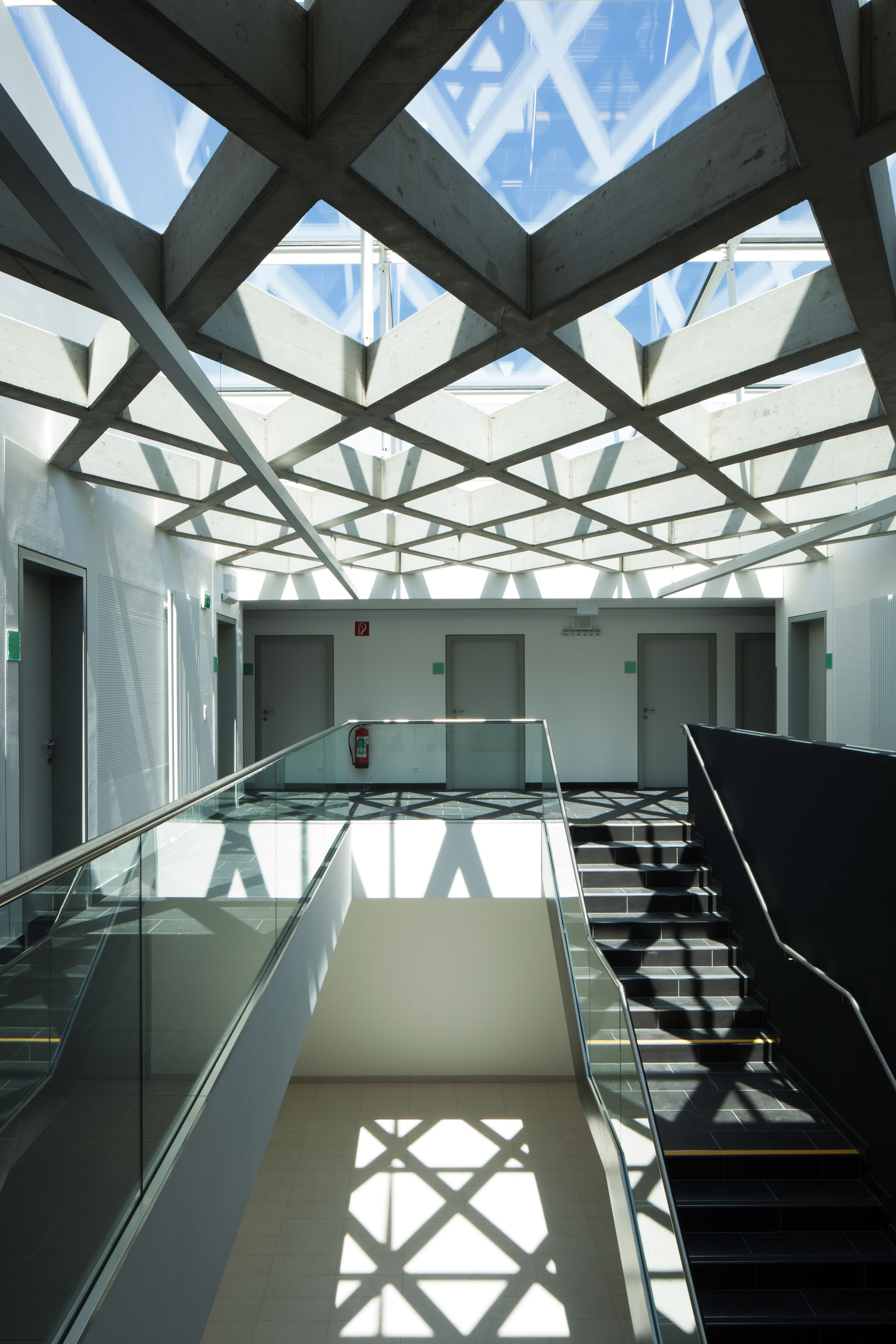
Clear shapes
Smooth surfaces, clear, straight shapes and mainly black and white characterise the design of the rescue station. This spatial arrangement keeps the focus on the essentials, and the station is manageable and clearly organised.
A special diamond-shaped raw concrete ceiling construction allows daylight to enter the stairwell through the glazed roof, thus softening the clean image of the station.
Short ways
The direct central arrangement of the rooms around the atrium means that the distances and corridors are short, thus reducing the time needed for evacuation to a minimum. The ground and upper floors form a fire compartment, as the escape distance from each room to the main entrance is less than 40m.
